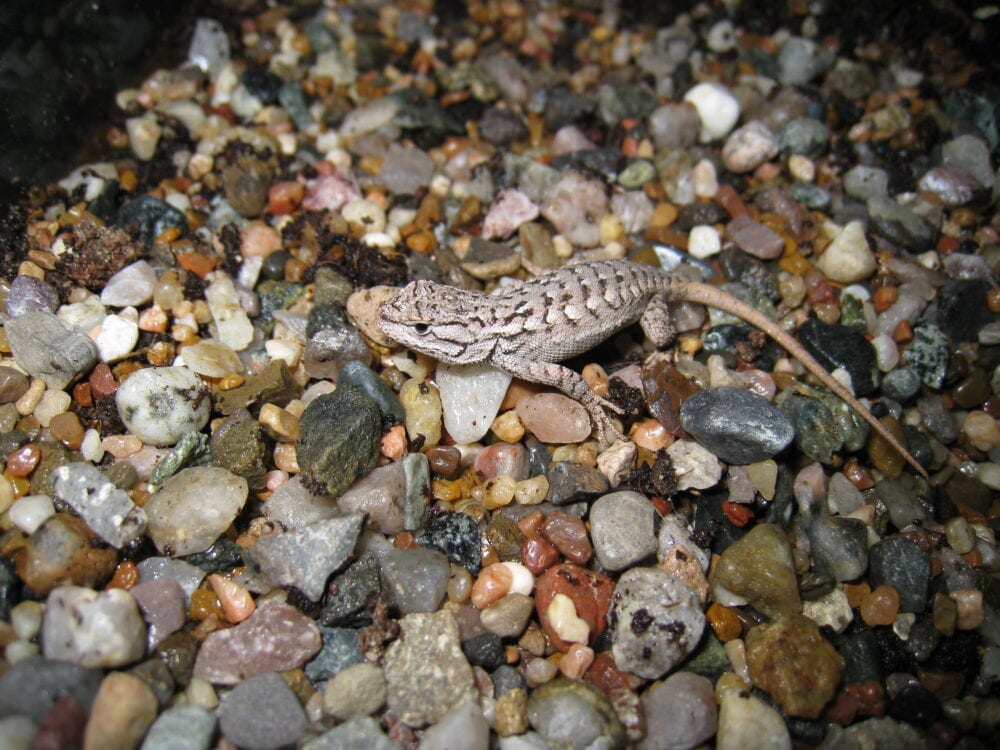
By Jennifer Macke
One of the hallmarks of springtime is the emergence of reptiles from their winter inactivity. Lizards and snakes spend the winter underground, burying themselves below the frost line. As the weather gets warmer, you will begin to see them out and about, at first just during the warmest part of the day. You may see them basking to warm up in the morning, and actively hunting prey in the early afternoon. If the evenings are still cold, they will retreat back underground at night.
First to Emerge
Since emergence depends on temperature, the first places you are likely to see lizards are in warm, sun-soaked sites. Look for them in the Rio Grande valley, and on warm mesa-tops. They emerge later in the mountains.
Emergence varies by species. The first species of lizard you are likely to see are fence lizards. This species is highly adaptable to a wide range of temperatures, and are quite tolerant of cool-but-sunny spring days. Some other species, such as the whiptails, require a higher temperature. Whiptails will emerge later, and have shorter periods of activity only in the warmest part of spring days.
Soaking in the Sun
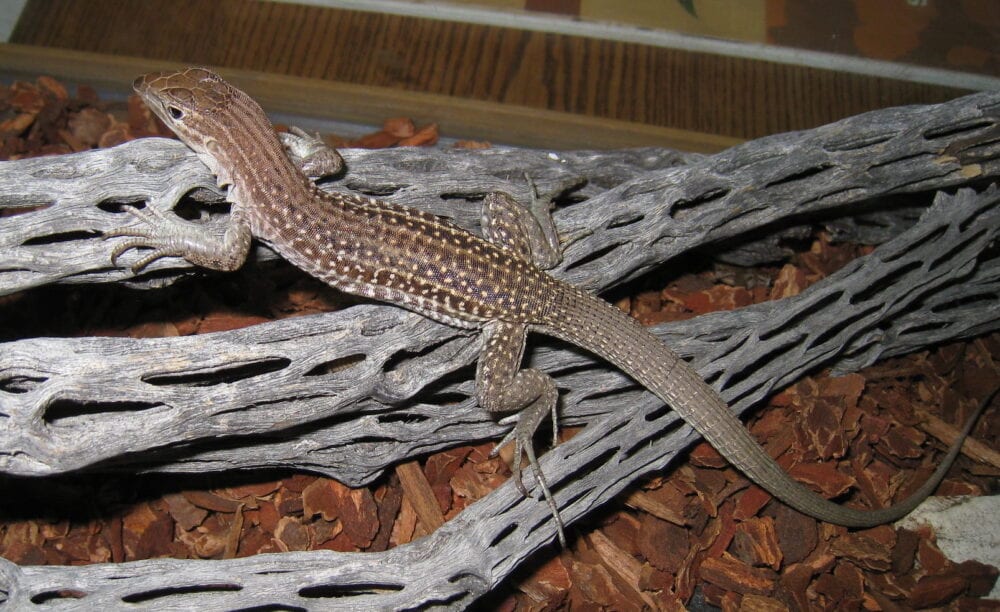
Basking in the sun serves two essential purposes for lizards: heat and vitamin D. Reptiles produce very little of their own body heat, and are almost entirely dependent on heat from their environment. Unlike us, they have a range of body temperatures in which they can function. Most reptiles can only digest food above a certain temperature, so they bask in order to be warm enough to digest their food.
Vitamin D is an essential nutrient for all vertebrate species, and sunshine is the major source for most lizards. Their diet of insects doesn’t provide enough vitamin D, so they depend on basking to provide it. In fact, scientific studies have shown that lizards bask longer when their bodies are deficient in vitamin D.
Be an Instant Expert
To be a bird expert, you will need to learn more than 100 species, but being a lizard expert is easy. We have only about a dozen species in the area, and there are just two types that vastly predominate: the fence lizard and a group of related species that we will lump together as the whiptails. If you learn to tell the difference between the fence lizard and the whiptails, you can easily identify 90% of the lizards you see, and everyone will think you’re a pro!
Let’s take a closer look at the differences between fence lizards and whiptails.
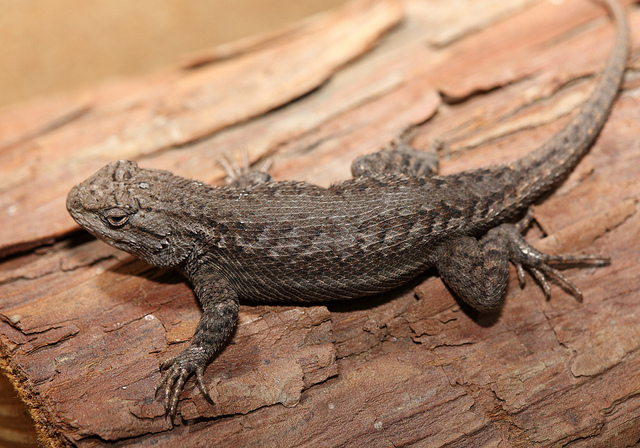
Eastern Fence Lizard (Sceloporus undulatus)
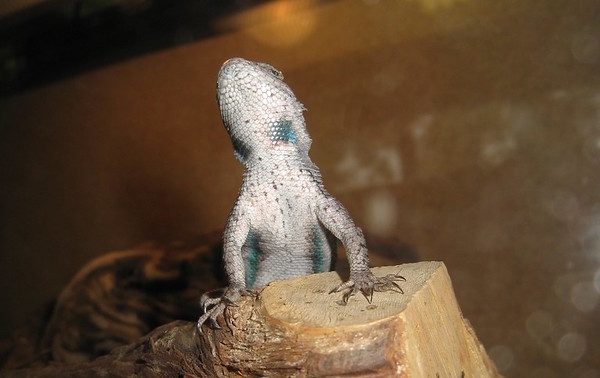
The first lizards to emerge in spring are also the most common: the fence lizard. This lizard goes by several different common names, including Swift, Prairie Lizard, and Blue-belly. Some individuals, especially juveniles, have a herringbone-like pattern of dark brown markings on a light brown body. Some adults also have this pattern, or their markings may fade to a uniform gray-brown.
Fence lizards have blue patches on their chin and belly, giving them the common name Blue-belly. These patches are larger and more obvious in males than in females. In spring, you may see a male Fence lizard doing “push-ups” in order to display his blue belly to a nearby female.
The Whiptail Lizard Family (Aspidoscelis spp.)
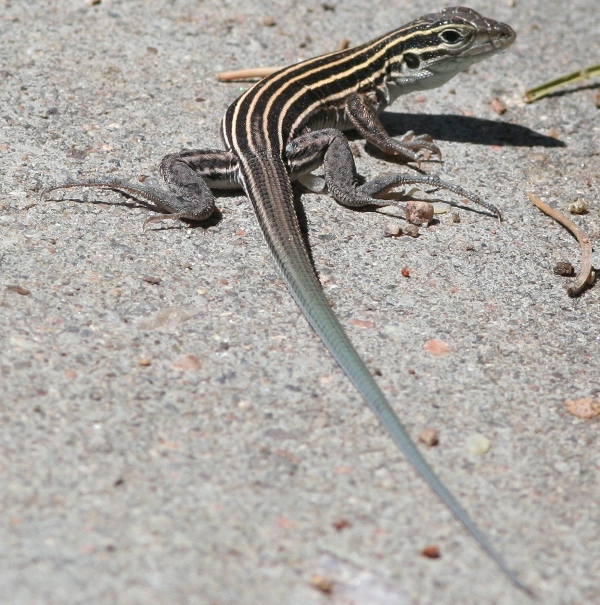
The whiptails are a group of related species named for their long, thin tails. We have five whiptail species that occur in our area, but even experts have difficulty distinguishing some of the species at a glance. The whiptails require very warm temperatures to be active, and thus their emergence comes later in spring.
Whiptails are very fast-moving. They often display jerky start-stop movements, which can create a unique sound when they move through leaf litter or dry grass.
Most whiptails have “racing stripes” running the length of their body. Like fence lizards, the whiptails have courtship rituals in springtime, so spend some time watching their antics.
Other Lizard Species
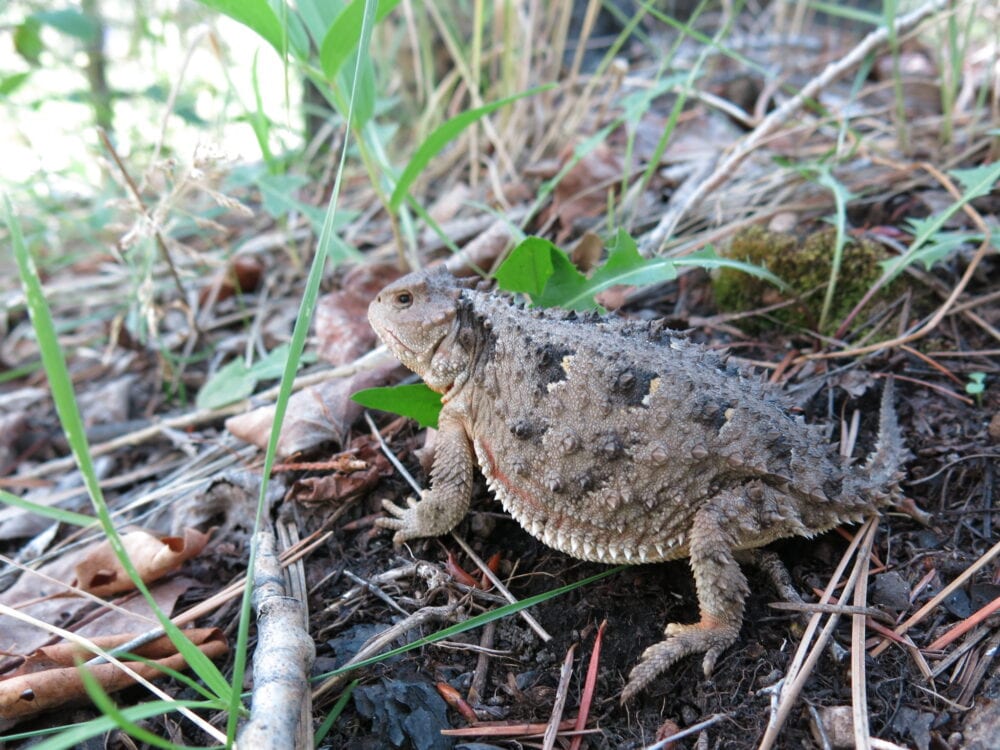
Some of the less-common lizards in the local area include the tree lizard, the horned lizard (also known as horny toads), the many-lined skink, and the collared lizard. For additional information and photos, check out PEEC’s online Reptile Guide.
Now that you are an instant expert, see if you can observe some basking lizards and watch their interesting behaviors this spring!
